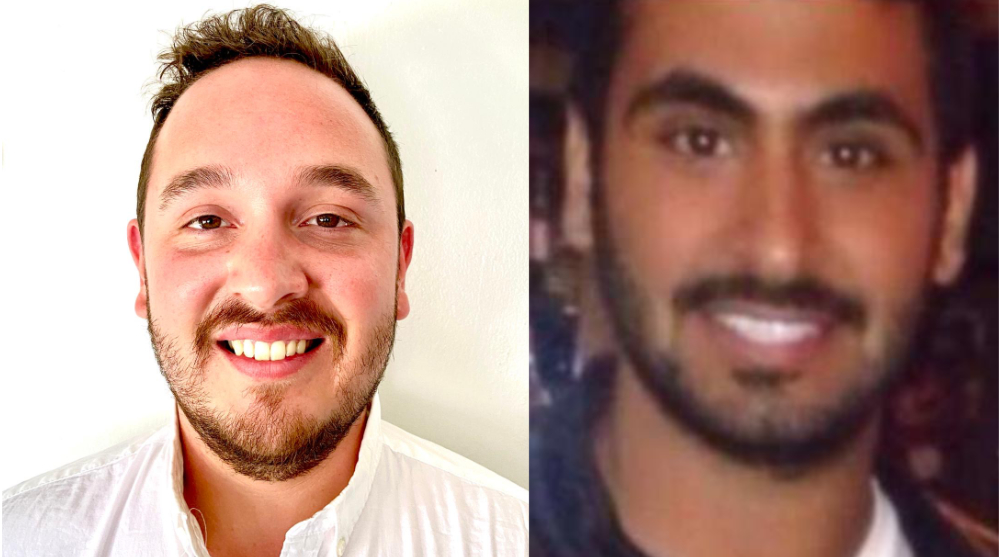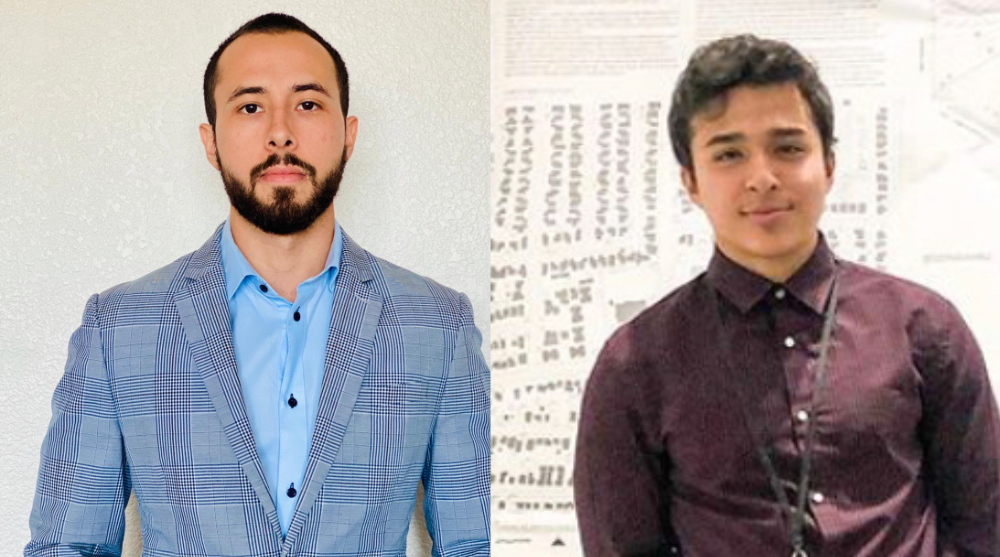We’d like to take the opportunity to introduce you to the Honourable mention winners for our “SKYHIVE 2020 Skyscraper Challenge” competition - Sergio Esquinca, Daniel Ramirez, Alhakam Alaedh and Adrian Salinas from the United States.

Sergio Esquinca, Alhakam Alaedh

Adrian Salinas, Daniel Ramirez
We are a group of Architecture Graduate Students that come from El Paso, Texas, and we have been through many things alongside since the early beginnings of our architectural education.
Our fascination for architecture began at a very young age. Architecture has been at the back of our minds since we can remember. As Mexican-Americans who were born in the border city of El Paso, most of our childhood and adulthood has consisted of crossing the border back and forth to Ciudad Juarez, MX. We were basically raised in two very different countries; however, we have been strongly influenced by a mixture of cultures and lifestyles that have been helping us shape our own identity. Living among these two cities, we have been influenced by many other characteristics of the culture, such as art, design, and historic relevance, but we have also experienced the social differences that exist in the area.
Brief information about the projects that you/your company have been involved with. For instance, what scale have you focused on/preferred, any significant projects where company/ individuals have been involved?
In San Francisco, during the 1989 Loma Prieta earthquake, 67 people perished, 3,000 were injured, and it caused more than $5 billion in damages. This disaster was one of the most powerful and destructive earthquakes to ever hit the United States. The architectural solution is to encounter the problem not by eliminating all earthquake risks, but instead by reducing them to an acceptable level and protecting against injury and loss of life. Therefore, by taking into consideration the seismically active characteristics of the Bay Area, a new structural element was implemented, called the Pin-Fuse compression joint. It is designed to deal with shear stress forces by emulating the pivotal movements of a human shoulder. These joints would start to move and react to the loads applied during an earthquake by dissipating them and minimizing the damage on the structure.
This project promotes an alternative to reduce global emissions by replacing steel and concrete with wood. This structure is made of prefabricated glue-laminated timber ribs that merges the structure, technical infrastructure, and the practicality into an architecture element. This structure allows for further expansion in the future, by the act of stacking more ribs. These ribs would define the interior and its spatial articulation, the openings would provide indirect light to penetrate, but also add a subtle glow to the interior; the ribs change throughout the structure to define different spaces from large spans to more intimate moments such as the ramp. The ramp would allow for vertical and horizontal circulation from the underground to the roof top while complying with ADA. It would also provide different and unique vantage points of San Francisco. Overall, this project understakes a wider vision and mission by acting towards the city needs, creating an opportunity to build environmentally friendly cities; and helping rural economies with new manufacturing jobs.
What does architecture mean to you and what is the role of an architect in your society?
Our design process includes spending a considerable amount of time getting to understand the intention of the project, the importance of its social impact, and the environmental impact that it can produce. When we are designing, our focus is to research the concept or idea of the client/project; we also try to learn as much possible from previous studies and projects that we might have done in the past. For us, a successful design is the one that brings an emotional connection to the user while solving the functionality of the structure.
Why do you participate in architecture vision competitions?
We have just started participating in architectural competitions. We believe that, by working on these projects, we are able to communicate our designs, and hopefully it will help us to grow more in experience and someday create what we could call our own architectural firm.
Top 3 Reasons Why You Should Enter Architecture Competitions
Curious about the value of architecture competitions? Discover the transformative power they can have on your career - from igniting creativity and turning designs into reality, to gaining international recognition.
Learn more



























